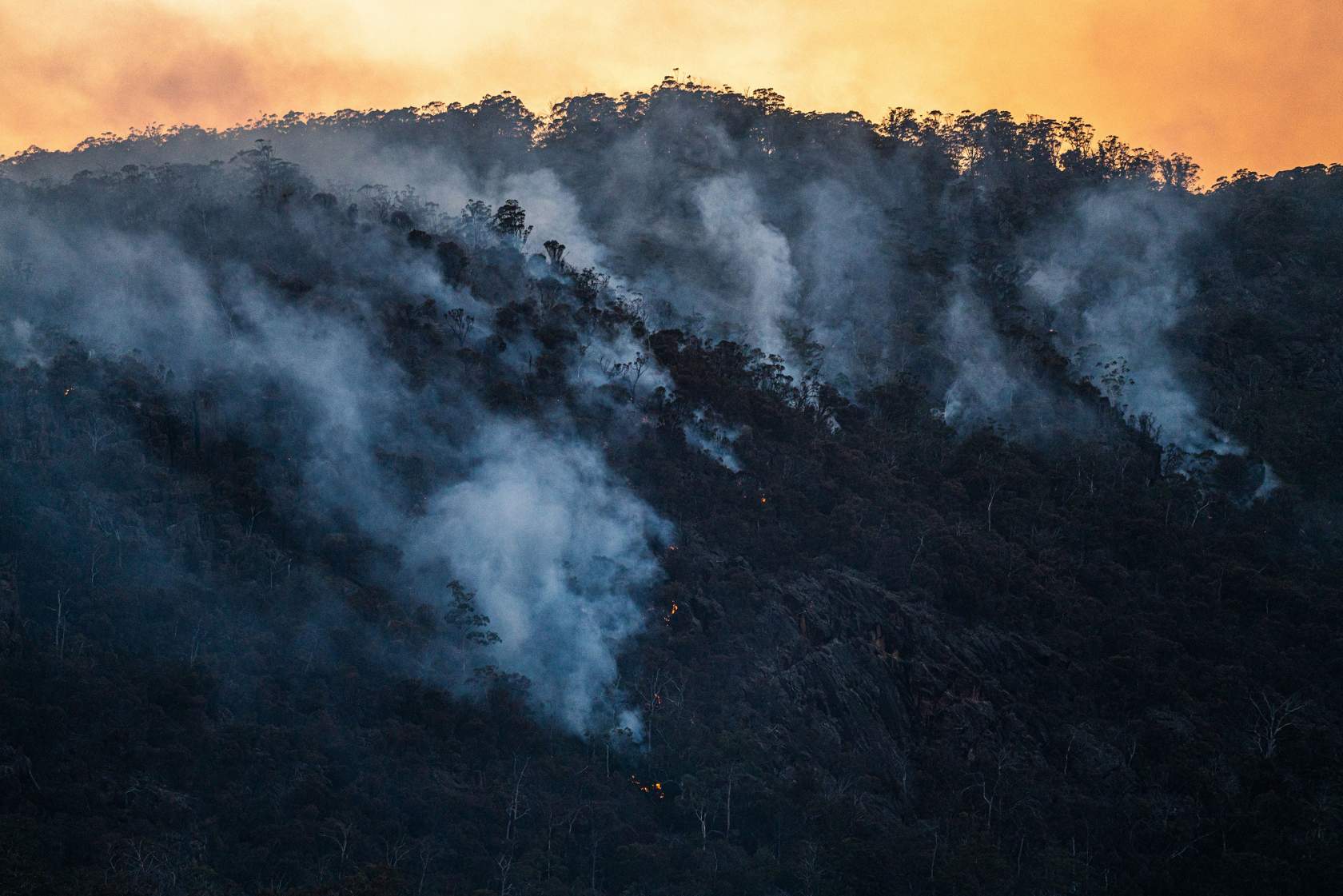
Wildlife Victoria are recording an increase in reports to our Emergency Response Service due to the increasing impacts of climate change. Our wildlife are on the frontline of changing and intensifying weather patterns across the state. It’s important to recognise signs and symptoms of injury, and what can be done to help.
Bushfires
In the aftermath of a bushfire, numerous wildlife species are significantly impacted, including koalas, kangaroos, possums, wombats, birds, reptiles and more. Many will suffer burns to their feet and tails, as well as smoke inhalation, dehydration, and infection.
The ongoing impact of habitat loss and viable food sources due to fire also places native animals at increased risk of exposure and starvation.
It is crucial to note that fire-injured wildlife may develop complications long after the flames have subsided. Even minor wounds can lead to infections and fatalities if left untreated. These animals may seek refuge on private properties in search of food, water, and shelter.
Your vigilance and timely intervention can make a significant difference in the survival, recovery, or reduction of suffering of these vulnerable creatures. For months after bushfires, it's important to observe wildlife for signs of distress or injury. Here are key indicators to watch for:
Wildlife are easier to approach than normal, showing less fear or hesitation around humans.
Animals appear lethargic, exhibiting reduced activity levels or slower movements than usual.
Some animals may move slowly or exhibit signs of pain, such as limping or difficulty moving away when approached.
Koalas seen on the ground could indicate they are injured, distressed or exhausted from the bushfire.
Nocturnal animals out during daylight hours could indicate injury or distress.
Storms
Wildlife can be significantly impacted during and following storms with high winds, heavy rains and flooding.
High winds
Species most likely to be impacted by high wind events include birds and arboreal (tree-dwelling) species. Bird nests may be blown out of trees or nestlings and fledglings may be thrown to the ground. Possums, grey-headed flying foxes, gliders, and koalas are at risk of being injured from falling trees.
Heavy rains
Birds and smaller mammals are particularly at risk in wet weather with a high possibility of them becoming waterlogged, leaving them vulnerable to conditions like hypothermia. Some birds that become extremely waterlogged will be unable to fly, putting them at significant risk of predation.
Flood waters
Rising flood waters are dangerous to our terrestrial (ground-dwelling) species including kangaroos, echidnas, wombats, and reptiles. Kangaroos can be marooned on islands of incompatible habitat due to rising flood waters, resulting in starvation. Echidnas, wombats, and reptiles may be pushed out of their burrows and left effectively homeless.
What to do?
If the animal is small enough to contain, such as birds and possums, please place them in a quiet, dark carrier. DO NOT try to feed or give them water and do not attempt to treat the injuries yourself. These animals must be helped as soon as possible. Once contained, please call Wildlife Victoria’s Emergency Response Service on (03) 8400 7300. Only attempt to contain animals if it is safe to do so. Maintaining your own safety is just as important as the animals.
For larger animals such as kangaroos and wombats, please take any videos or photos of the animals' conditions if safe to do so, take note of the location of the animals and call Wildlife Victoria’s Emergency Response Service on (03) 8400 7300.
We hope that by increasing your understanding and awareness of our beautiful wildlife, you will feel empowered to manage wildlife situations confidently and in an informed, safe and appropriate manner. For support at any time, please call our 24/7 Emergency Response Service on (03) 8400 7300.
